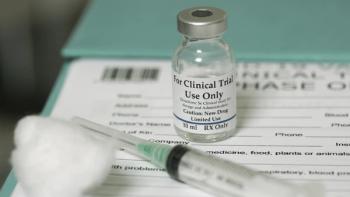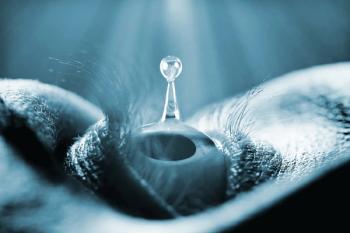
How ODs can help combat depression in glaucoma patients
Researchers have found a significant correlation between depression and visual field loss in patients with glaucoma, according to a study in Ophthalmology.
Researchers have found a significant correlation between depression and visual field loss in patients with glaucoma, according to
Researchers evaluated 102 patients with glaucomatous visual field defects on standard automated perimetry (SAP). Each patient completed a Geriatric Depression Scale (GDS) questionnaire and visual field tests obtained over approximately two years. The GDS questionnaire asks 15 yes-or-no questions, such as “Are you satisfied with your life?” and “Do you feel that your situation is hopeless?” to evaluate the patient’s state of mind.
Blog:
Researchers assessed change in depressive symptoms by calculating the difference between GDS scores at the last follow-up visit from those at baseline, while rates of visual field loss were assessed by SAP, and mean sensitivity (MS) over time were obtained from linear mixed models. Researchers then used regression models to investigate the association between progressive visual field loss and changes in depressive symptoms, adjusting for potentially confounding clinical and socioeconomic variables.
Study results
The study found that each one decibel (dB)/year change in binocular SAP MS was associated with a change of two units in the GDS scores during the follow-up period. In a multivariable model adjusting for baseline disease severity, change in visual acuity, age, gender, race, Montreal Cognitive Assessment score, education, income, and comorbidity index, each one dB/year change in binocular SAP MS was associated with a change of three units in the GDS score.
“Our findings suggest that rates of change may be indicative of the risk for developing depressive symptoms in patients with glaucoma,” the study’s authors write, “and they emphasize the need for an accurate and precise assessment of rates of change in monitoring this disease.”
The study’s authors recognized that the average follow-up time for the study was relatively short considering the long-term duration of glaucoma.
Even with the study’s the time frame, investigators found statistically significant association between longitudinal changes in SAP and GDS scores. They acknowledge that longer-term follow-up may offer better information.
Related:
Optometry Times Editorial Advisory Board member Mohammad Rafieetary, OD, FAAO, notes that the connection between vision loss and depression has been documented previously, but says that it is interesting that this study was able to observe the progression of the GDS score correlated to the loss of visual field in such a linear fashion.
“We have to ponder, aside from adjusting from age, gender, etc., if frustrations with dealing with a chronic disease (compliance, cost, logistics), particularly in view of failure in spite of therapy, plays a role in the degree of patient’s depression as opposed to only the loss of visual function,” says Dr. Rafieetary.
What you can do to identify depression
Because optometrists are increasingly responsible for the management of glaucoma and other sight-threatening diseases, you may see more patients who are suffering from depression as their condition worsens.
Optometry Times Editorial Advisory Board member Michael Chaglasian, OD, FAAO, says it is understandable that patients with rapidly declining vision would experience depression, but it’s a concern that is often overlooked by ODs.
“Optometrists often are not well trained in how to identify depression during patient exams,” he says. “Given the increasing role of ODs in managing patients with glaucoma, having a resource tool like the GDS can efficiently add a screening for depression.”
Related:
Dr. Chaglasian recommends utilizing the GDS (which you can find
“It is important for us to remember that there are more aspects to glaucoma than just trying to lower the eye pressure,” he says.
Optometry Times Editorial Advisory Board member Ben Casella, OD, FAAO, agrees, saying that this study shows that glaucoma robs patients of their quality of life along with their vision.
“It is important to recognize the benefits of educational and social resources for the visually impaired in our communities,” he says. “Truly, every patient is so much more than a pair of eyes, and, as optometrists, we often find ourselves on the front lines of such major life changes.”
Newsletter
Want more insights like this? Subscribe to Optometry Times and get clinical pearls and practice tips delivered straight to your inbox.













































.png)


